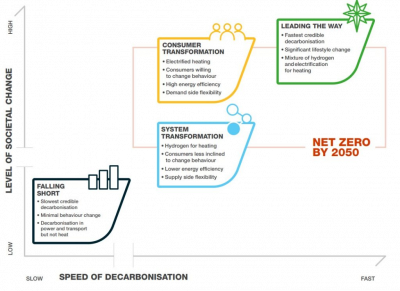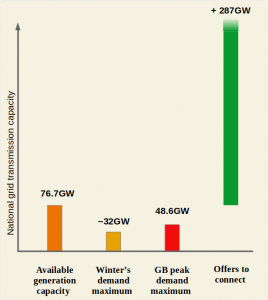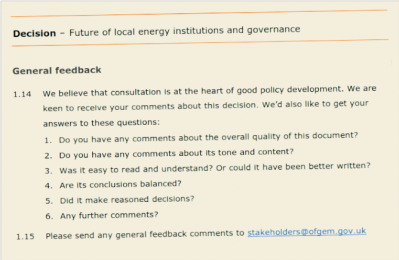@editor i guess the question is whether Export prices will come down? Octopus Fixed at 15p is looking pretty generous vs Agile & Tracker Import prices
Listed Grade 2 building with large modern extension.
LG Therma V 16kw ASHP
Underfloor heating + Rads
8kw pv solar
3 x 8.2kw GivEnergy batteries
1 x GivEnergy Gen1 hybrid 5.0kw inverter
Manual changeover EPS
MG4 EV
As part of this announcement today, the BBC reports that the regulatory authority has decided to impose an additional charge of £28 annually on all consumers' energy bills. This measure supposedly aims to address the outstanding debt totaling £3.1 billion, which has accumulated as a result of customers being unable to pay their energy suppliers.
While I believe in supporting those in need and consider generosity a virtue, the current approach raises concerns. The logic behind the existing system is perplexing. At a time when major energy companies are reporting significant profits, it seems unfair that the financial burden of unpaid energy bills, exacerbated by the ongoing energy crisis, falls on the shoulders of the general public. This scenario suggests a need for a more equitable solution that doesn't disproportionately affect consumers, especially when the profitability of energy corporations is taken into account.
Thoughts?
Get a copy of The Ultimate Guide to Heat Pumps
Subscribe and follow our YouTube channel!
@editor its a complex question!!
I'm not sure the energy suppliers are making excess or unreasonable profits? We have to separate the upstream Oil & Gas explorers/producers .... from refining .... from elec generators... from the distributor energy companies.
Media coverage tends to be very poor and conflates the different types of company... ignoring basic facts (such as Shell/BP etc get the vast majority of their production and profit from overseas - so is not taxable here anyway).
Sadly the demise of almost all the small companies since the Ukraine war started has meant there is little competition and the companies are all charging similar standard tariffs. Thank goodness for Octopus - that at least tries to offer a variety of tariffs.
The level of bad debt is a big problem for everyone (gov, companies, consumers) as it starts to look like paying for elec and gas is becoming optional! with bad debt falling on the remaining paying consumer. Somehow we need a system that helps those genuinely in need - without a huge bureaucracy or overly complex system to navigate. Perhaps a social tariff that gives those in need their energy at cost price would be a starting point? Of course Octopus Tracker is close to that but still includes a profit element.
no easy answers!
Listed Grade 2 building with large modern extension.
LG Therma V 16kw ASHP
Underfloor heating + Rads
8kw pv solar
3 x 8.2kw GivEnergy batteries
1 x GivEnergy Gen1 hybrid 5.0kw inverter
Manual changeover EPS
MG4 EV
@editor Consumers are failing to keep up payments for their energy bills; OK, to make up for this, we’ll impose a further burden by increasing their bills - that’ll fix it! Eh???
Massive increases in prices have been introduced due to the increases in buying price of energy due to a created shortage. There are (as stated elsewhere) numerous stages from seabed or underground drilling to energy entering our pipes or the grid.
Most of the increases in price originate during the early stages of marketing - though at that stage, there hasn’t actually been any increases in ‘production’ costs - just greed. Later stages in the supply chain have to pay these much inflated levels of charges before passing the ‘cost’ onto the consumer.
As mentioned elsewhere, hats off to the likes of Octopus who are doing their darndest to keep charges as low as possible - and also going the extra miles to assist those who can least afford but have the greatest need for energy to try to keep warm and eat.
I fail to understand the taxation system (or non-taxation) whereby the large corporates can play clever games via well paid and skilled accountants and by this means, pay the least taxes in the most favourable country whilst donning their blindfolds so as not to see the suffering thus caused. I’ll get off my soap box now… Regards, Toodles.
Toodles, heats his home with cold draughts and cooks food with magnets.
Although it is tempting to say that production costs have remained static, that would only be the case if they were zero. Equipment costs and maintenance charges still accrue and both are subject to the inflationary pressures of wage increases. As @Tim441 states, there will be some people who consider that paying for energy is optional, just as there are some who will use food banks simply to take advantage of freebies.
I wonder how many years we will have to pay a £28 surcharge for paying consumers to repay £3.1Bn (plus interest). How many residential consumers are there? Increased charges to cover the failed energy supplier fiasco were supposed to be a short-term measure.
Having said the above, I have benefitted greatly this heating season from Octopus's Agile and Tracker tariffs so there is clearly considerable leeway for social tariffs. Why are genuinely needy people paying the better part of twice the rates that I have been paying? No doubt if they are in arrears, they would not have an option to switch.
I've been looking through the actual data published Ofgem and in particular the daily standing charges (DSC) for electricity.
Although the standing charge has up to 9 elements in the calculation, it is indicative of the amount being paid to the DNO for each region for grid upgrades.
The important point is that the DSC is independent of the costs of the energy itself.
For the purposes of this discussion I'm zooming in solely on the charge for consumers with a monthly direct debit, which will be most of those likely to read these comments.
And I'm comparing the DSC for those on a single rate throughout the day with those on a multi-rate (ToU) tariff.
That multi-rate could be a household with just one tariff change per day, such as Economy7 and Octopus Go...
... or many changes throughout the 48 half-hour billing periods of each day.
The chart shows the percentage change between Q1 this year (Jan to March) and Q2 (April to June) which has just been announced.
The DSC has gone down for consumers in North West England (Electricity North West)
Ignoring South West England for the moment, the Distribution Regions have a higher rise in the DSC if you're on a single rate (flat) tariff.
You'd expect that. Those households have no financial incentive to avoid the peak-rate periods, so the grid needs more costly infrastructure upgrades to keep them supplied.
The oddity is SW Region (NGED) where it costs more if you're on a multi-rate ToU tariff.
Currently (Q1), the DSC for single rate tariff is 56.68p /day
whilst multi-rate (ToU) DSC is set at 58.66p /day
That's contrary to expectations.
SW Region is a net exporter of electricity to the national Transmission Grid.
It is more than three-times over-subscribed for commercial solar/wind generation.
Those with ToU tariffs, who make better use of the fluctuating generation, are being charged more than the others.
The Q2 percentage change/rise in SW Region for single-rate households is therefore much higher than anywhere else.
That's an attempt by Ofgem to correct that historical anomaly.
In the rates just announced by Ofgem, only consumers in Northern Region (70.94p /day) will be paying a higher DSC than households in SW Region (67.93p /day).
That's worrying.
The regions which are making the greatest contributions towards carbon reduction (due to the high proportion of renewable generation) are having to pay more for infrastructure enhancements.
There's no financial incentive for a region to attain Net Zero.
Save energy... recycle electrons!
Here's another graph which might be of interest.
I'm looking at the Standing Charge for electricity in four DNO Regions.
These are the four outliers. Other regions will fall just above South-East England, but that would make the graph over-crowded.
The statistics are taken directly from Ofgem's own spreadsheets, using their inbuilt "correction factors" which I don't understand.
These assume Nil electricity usage.
Percentage rises in the Standing Charge reported by the BBC are slightly higher that those I've plotted.
This is possibly because they have factored in some historic variations in the Standing Charge between prepayment meters and credit account customers.
There are two main observations:
1: From April this year (2024), Northern Region will regain it's historic position as having the highest standing charges.
I will conjecture that its consumers are required to fund significant grid upgrades to support more wind-generation from the North Sea.
2: London continues to enjoy the lowest Standing Charges because it requires little grid reinforcement.
However, it is a major beneficiary of 'Zero Carbon' generation from outside its region.
These statistics are worthwhile noting.
The figures precede the application to Ofgem from National Grid to increase grid capacity five times over.
New generation and storage sites are not required to contribute towards the Great Grid Upgrade, due to Ofgem's Significant Code Review on Access and Forward-Looking Charges, in May 2022. The infrastructure upgrade costs will need to be funded from increased system charges on consumers.
Save energy... recycle electrons!
Perhaps you can shed some light on why it costs a generator in most of England and Wales £0.49/MWh in transmission charges to connect to the grid yet in Northern Scotland it costs £7.36/MWh. Doesn't the grid want all that renewable 'leccy that is coming ashore or is it more a reflection on the outdated and outmoded transmission system in the UK?
I wish I could provide answers in as succinct a fashion as @abernyte has just posed in the questions!
There are three companies who own licences to run the Transmission Grids in GB.
Most is built and maintained by National Grid Electricity Transmission (NGET).
But Scotland's 132kV-400kV transmission grid is shared between SSEN (formerly Scottish Hydro Electric Transmission) and SP Transmission whose map describing the boundaries is here:
Total demand requirement for Scotland is around 4GW, whilst generation is currently just under 18GW.
Within the Future Energy Scenarios, generation in Scotland could reach 43GW as soon as 2030 under the Leading The Way (optimal) scenario.
That's roughly the same as the maximum winter demand for the whole of Britain!
Posted by: @abernyteDoesn't the grid want all that renewable 'leccy that is coming ashore
Erm... it depends who you ask.
The transmission licensees want it because it creates work for them and profit for their shareholders.
But the costs exceed those for HS2... which, as we know, the UK can't afford!
When Britain is eventually "all electric", transmission capacity will need to be somewhere between 50-55GW.
That's an increase on the 48.6GW peak which was recorded in 2022, due to EV charge-points and heat-pumps,
but lowered again by us progressively introducing energy efficient appliances in the home.
However, there's almost 300GW of generation with an Offer to Connect.
The above histogram is derived from
DUKES statistics for 2022 (published 2023), and information I've received through direct communication with NGET.
Current energy policy is that companies holding electricity Distribution and Transmission licences may not reject applications for a grid-connection, unless there are concerns over safety or security for example.
Ofgem allows licensees to raise money for infrastructure upgrades from us consumers, but prohibited from seeking contributions for grid enhancements from those requesting the grid connections.
So that's why SSEN in Northern Scotland has significantly raised the actual cost of the connection itself.
You might consider it a sneaky way around the Decision Notice on Access Charges from Ofgem: https://www.ofgem.gov.uk/publications/access-and-forward-looking-charges-significant-code-review-decision-and-direction.
If readers here think that present energy policy/strategy fails the 'common sense test', then you need to get stuck into the debate and start writing to Ofgem.
Normally the industry regulator doesn't directly communicate with consumers. We're not part of the 'energy sector' who they regulate.
But their Decision Notice ( https://www.ofgem.gov.uk/sites/default/files/2023-11/Future%20of%20local%20energy%20institutions%20and%20governance%20decision.pdf) regarding the new Independent System Operator and Planner has a request for feedback buried in Section 1.15.
Since they even kindly provide us with an email address, it would be a shame not to comment, wouldn't it?!
Save energy... recycle electrons!
So the transmission charges are being levied by the gatekeepers to the Grid and they presumably stick to their grubby mitts? I still don't get why the English "gatekeepers" need so little fee per MWh compared to SSEN to do effectively the same job? Is Ofgem asleep again?
- 26 Forums
- 2,396 Topics
- 54.3 K Posts
- 311 Online
- 6,077 Members
Join Us!
Worth Watching
Latest Posts
-
RE: Fan is clipping ice build up from the front of unit.
It’s fitted to the outside of rear main unit. if look...
By Westkent , 5 minutes ago
-

RE: Running from backup generaor in powercut?
Here's the Power Cut map from Cornwall at 23:00 last ni...
By Transparent , 41 minutes ago
-

RE: Recommended home battery inverters + regulatory matters - help requested
@jamespa - your diagram with my additions ...
By Transparent , 55 minutes ago
-
RE: New Mitsubishi Ecodan 11.2kW installation - L9 errors and maybe more
Hi @jamespa - thank you again. Yes, I think it pro...
By anotherdaveuk , 2 hours ago
-

RE: ASHP Energy Consumption: Aira 12kW heat pump
Indeed. Present ToU tariffs are based on national sup...
By Transparent , 2 hours ago
-
RE: Help me keep the faith with my air source heat pump installation
@adamk I'm observing my own system at low temperatures ...
By dr_dongle , 2 hours ago
-

RE: Free Ecoheat Heat Pump Install
@deltona Yes older houses are problematic like that, bu...
By bontwoody , 22 hours ago
-
RE: Radiator sizing sanity check
As I mentioned early on the cost of supplying and fitti...
By JamesPa , 1 day ago
-
RE: Advice for a novice on Mitsubishi Ecodan 6kW
I hadn't spotted that there were two pumps in the UFH (...
By JamesPa , 1 day ago
-
RE: Setback savings - fact or fiction?
Never assume it makes an ass of u and me! You need the...
By JamesPa , 1 day ago
-
RE: Electricity price predictions
Great point, one of the key ones in my chat with Octopu...
By Batpred , 2 days ago
-

RE: New Fogstar 15.5kWh upright solution
Let me point out that there are many Chinese suppliers ...
By Transparent , 2 days ago
-

RE: Weather compensation- why you should use it
@majordennisbloodnok — The Two Ronnies Mastermind sketc...
By cathodeRay , 2 days ago
-
Just realised that this image of the cylinder cupboard ...
By Sheriff Fatman , 2 days ago
-

RE: Rodents! A word of warning for heat pump owners
Two thoughts: 1: Let's ask @david-s if Primary Pro in...
By Transparent , 2 days ago
-
RE: Solis S6-EH1P8K-L-PLUS – Why I Chose It and What I’ve Learned So Far
In the diagram below, I describe my understanding of th...
By Batpred , 2 days ago
-
I need to have a look out for it. I know IBM feeds some...
By Batpred , 2 days ago
-
-
RE: Daikin Atherma ASHP Cycling 6 Times an Hour?
Thanks for your reply. Yes that's a good idea to try a...
By John Marshall , 2 days ago
-

RE: Hot water heating in parallel with space heating
An external heat exchanger would need a pump which woul...
By bontwoody , 2 days ago













